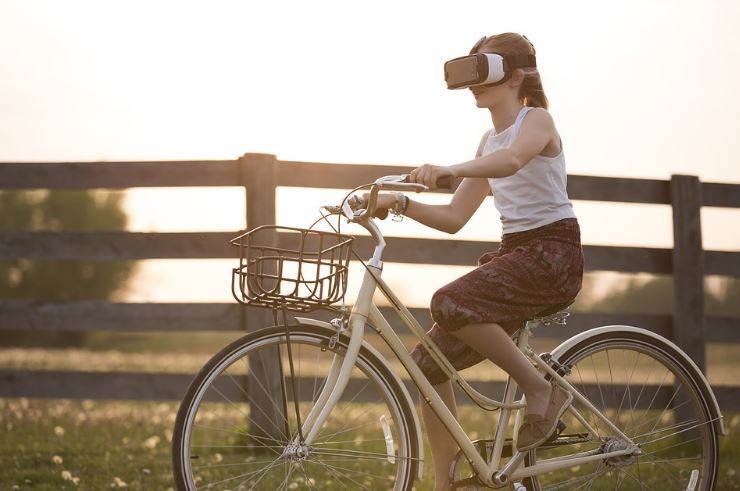The future of E-Learning grows closer and closer each year with developments in virtual reality and augmented reality. Augmented reality gives teachers a new way to interact with their classes delivering a hands-on experience from the comfort of your home. It’s a surprisingly accessible technology with the potential to completely change the way we view E-Learning throughout the world. You can take your current E-Learning modules to bring life to the way you teach your content. For example, the Microsoft Hololens gives crisp imagery right over your existing environment so you can apply your learning modules to real-world applications.

What is Augmented Reality?
Augmented Reality places computer generated images over your surroundings to make them seem real. You can use this technology to create a simulated environment that your learners can interact with. This takes their E-Learning out of the classroom into real-world applications.
Through the use of augmented reality, you can create an interactive experience for your learners that teach them everything they need to know in order to apply your lessons to real-world problems. You can utilize layered graphics, on-screen instructions, and show complex processes with the help of augmented reality. This brings the E-Learning experience into the future.
Augmented Reality for E-Learning
With the help of augmented reality, you can place your students into real world situations. They can then interact with the reality you created and learn about the real processes they need to know in order to become successful in their learning. You can also use these training modules as tests for your students to see how they perform in real world situations instead of how many definitions they memorized. After using augmented reality in your e-learning, your students will leave your classes feeling fully prepared for any situation they might come across as they apply what they learned to real life.
Simulate Real World Environments
Augmented Reality lets you include simulated real world environments in your E-Learning courses. This provides your students with a chance to test their skills in real world situations without risking any harm if they make mistakes. You can use this to teach them about technology they encounter or even enlarge smaller scale parts so they can better see what they’re working on.
Through using simulated real world environments, your courses will hold more weight after someone completes them. They will leave your E-Learning course completely prepared for the situations they’ll actually experience. This saves whatever company they go on to work for in training costs, as most other programs will only teach their students the theory behind the work instead of how to do the actual work.
Gamify Your E-Learning with Augmented Reality
You can also use augmented reality to gamify your E-Learning courses. The gamification of learning provides your students with a stronger learning experience. It provides them with a range of benefits to better understand the subject matter and provides them with higher levels of ownership over their own learning.
By gamifying your E-Learning through the use of augmented reality, you can also attract more students to your courses. When your students know they will have the chance to apply their course knowledge to their own decision making within your course, they can actually get more enjoyment. This will lead to them talking to their peers about your course which will build your referrals. It also gives them a chance to apply what they learned within your course to a game, which will help them remember everything they learned.
Provide an Immersive Environment
One of the most difficult parts of creating an E-Learning course is finding a way to combat the constant distractions your students will likely face. No matter what device they use to go through your course, they’ll be faced with competition for their attention. From email notifications to text messages, every minute of downtime in your course gives them a chance to pull their attention away.
With augmented reality, you can provide your students with an immersive environment, pulling them away from distractions. This brings their only focus onto your course to help them better understand the material. By providing your students with an immersive environment, you can also better simulate a real classroom or even one-on-one teaching sessions. This gives your students the ability to truly concentrate on the material without distraction.
How To Successfully Use Augmented Reality for Your E-Learning Applications
Utilizing any brand-new technology and applying it to E-Learning always poses some challenges, and augmented reality is no different. However, there are ways you can apply augmented reality to your courses that will enhance your students’ overall experience and their preparedness for real-world situations.
Whenever using augmented reality for your E-Learning applications, always make sure to consider which device your users will be utilizing for your course. This means your augmented reality environments must be capable of scaling to different devices, whether that be a phone, tablet, laptop, or desktop computer. Keeping your courses accessible to any device prevents you from needlessly excluding specific cases from your E-Learning applications.
You should also always keep in mind the end goals of your E-Learning applications. For example, if you’re teaching technicians to work on HVAC systems, you can use augmented reality to put them into real world situations. This makes them ready and confident to go onto working in the field directly after your courses. But, if your teaching statistics, you’ll want to take advantage of augmented reality’s ability to create layered graphs to better show the material. You can also apply motion tracking to let your students alter these graphs and see how the statistics change in real time.
No matter what industry your E-Learning applications apply to, augmented reality can be used to provide your students with an enhanced learning environment. With the help of augmented reality, your students will feel confident to take on any real world application instead of being scared.



